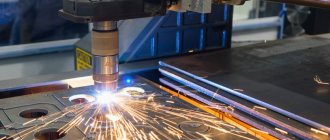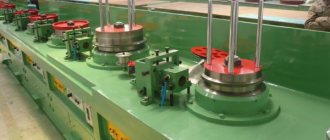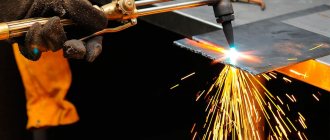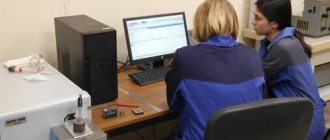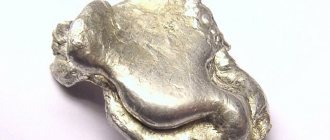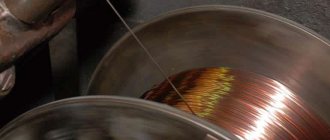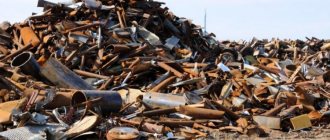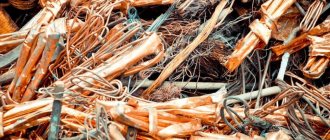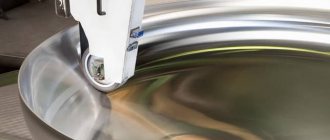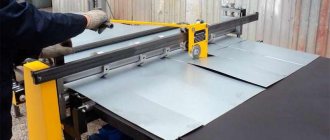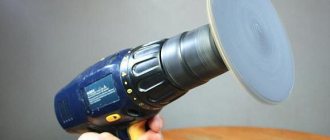For the convenience of studying many new metal processing technologies that are used in modern times, they are usually divided into types and methods.
The most commonly used method is mechanical, but its main disadvantage is the large amount of waste during processing. For example, stamping is the most economical method. But in the modern and developing world, new methods are emerging that are more economical, safe and effective. These are methods related to the physical properties of metals and chemical reactions.
Technologies of electroerosive processing method
This new metal processing technology is based on the action of a reduced electrical discharge. Thanks to this processing, complex parts and blanks used in devices and machines are created. To work, it is necessary to ensure the safety of employees, since the temperature in places where metal melts can reach up to 10,000 degrees Celsius. This temperature simply evaporates the metal and allows the technology to produce the most complex and bizarre parts.
Now this technology is used in almost all industries, but is especially widespread in mechanical engineering and aircraft manufacturing. Small parts used in engines and turbines are produced using this equipment.
Such machines are produced by domestic factories, and the range of equipment produced is very wide: from equipment for the production of small parts to the processing of large multi-ton spare parts. You can get acquainted with it at our exhibition.
Technologies using Ultrasound
Using the equipment, it is possible to create ultrasonic waves and infrasonic vibrations. Both vibrations are completely harmless to human perception, but in industry they are widely used and are suitable for working with various metals - both brittle and hard.
The heart of the machine is a special converter that converts electric current into high-frequency vibrations. This happens due to the movement of current through the winding and the creation of an alternating magnetic field that oscillates the converter. Ultrasound comes from the oscillating transducer.
Special converters are also used that are capable of changing the amplitudes of large oscillations into small amplitudes and vice versa. A device of the required shape is attached to the end of the waveguide; usually the shape of the device coincides with the shape of the required hole.
Such machines are most often used for the manufacture of matrices and their reprocessing, as well as for memory cells made of ferrite for various microcircuits and semiconductor devices. This is not the entire range of work performed using ultrasound. Welding, washing, cleaning and measurement control work are also possible. Moreover, all work performed by ultrasound equipment is effective and of high quality. You can get acquainted with ultrasonic equipment at exhibitions.
New electrochemical processing technologies
Electrolysis is usually used in production. It is a reaction in which ions obtained from a solute move towards the cathode and anode depending on whether they are positively or negatively charged. The products of the resulting reaction either settle on the electrodes or turn into solution.
Using electrolysis, relief casts of various metal models are made, as well as decorative coatings for products; metals are obtained from water and ores. The same new metal processing technology is used in chlorine production.
Thanks to technology using electrolysis, it is possible to organize the production of spare parts of any shape and complexity without much time.
Make grooves in parts and cut existing workpieces. There are various machines that use this processing method. The main advantage of using this equipment is the ability to process any metal, as well as the non-wear of the cathode while working with metal.
Despite all the advances in materials science, metal has been and remains the basis of industry and construction. The main task of technologists and designers is to develop metalworking methods that would be characterized by the greatest accuracy, productivity, and ensure minimal consumption of raw materials.
Foundry
Casting is the very first method that people began to use. The first was copper, and the smelting of iron from ore in a cheese furnace began in the 12th century BC. e. Modern technologies make it possible to obtain various alloys, refine and deoxidize metal. For example, deoxidation of copper with phosphorus makes it more plastic, and remelting in an inert environment increases electrical conductivity.
The latest advances in metallurgy have been the emergence of new alloys. New, higher quality grades of high-alloy stainless steel of the austenitic and ferritic class have been developed. More durable and corrosion-resistant heat-resistant, heat-resistant, acid-resistant and food-grade steels AISI 300 and 400 series have appeared. Some alloys have been improved and titanium has been introduced into their composition as a stabilizer.
In non-ferrous metallurgy, alloys with optimal characteristics for a particular industry have also been obtained. Recycled general-purpose aluminum 1105, high-purity aluminum A0 for the food industry, airlines, among which the most popular grades in the aviation industry are AB, AD31 and AD 35, seawater-resistant ship aluminum 1561 and AMg5, weldable aluminum alloys alloyed with magnesium or manganese, heat-resistant aluminum such as AK4. A wide range of copper-based alloys - bronze and brass - also have characteristic features and satisfy all the needs of the national economy.
Classification of non-ferrous metals
Non-ferrous metals have a characteristic shade and high ductility. They are extracted from the earth's rocks, where they are found in very small quantities. Processing non-ferrous metals is a labor-intensive and financially demanding process, but it brings huge profits. Products made from them have unique characteristics that are not available when made from ferrous materials.
All non-ferrous metals are divided into several groups according to their properties:
- heavy (tin, zinc, lead);
- light (titanium, lithium, sodium, magnesium);
- minor (antimony, arsenic, mercury, cadmium);
- scattered (germanium, selenium, tellurium);
- precious (platinum, gold, silver);
- radioactive (plutonium, radium, uranium);
- refractory (vanadium, tungsten, chromium, manganese).
The choice of the group of non-ferrous metals used in production depends on the desired properties of the final product.
Basic properties
Copper is a ductile metal with good thermal conductivity, but low electrical resistance. It has a golden color with a pink tint. It is rarely used independently; more often it is added to alloys. Metal is used to make instruments, machines, and electrical equipment.
Bronze is the most popular copper alloy and is produced by adding tin and chemicals. The resulting raw material has strength, flexibility, ductility, is easy to forge and is difficult to wear.
Aluminum conducts electricity well and is a ductile metal. It has a silver tint and is light in weight. Fragile, but resistant to corrosion. Used in military affairs, food industry and related industries.
Zinc is a rather brittle non-ferrous metal, but it is resistant to corrosion and ductile if heated to a temperature of 100–150 ºC. With its help, a corrosion-resistant coating is created on products, as well as various steel alloys.
When choosing a non-ferrous metal for a future part, you need to take into account its properties, know all the advantages and disadvantages, and also consider alloy options. This will allow you to create the highest quality product with the specified characteristics.
Formation of technological characteristics of the alloy
The modern metal market offers a variety of semi-finished products made from various steel and non-ferrous alloys. Moreover, the same brand can be offered in different technological states.
Heat treatment
Through heat treatment, the alloy can be brought to the most rigid and durable state or, conversely, to a more ductile state. Solid state “T” - thermally hardened, achieved by heating to a certain temperature and subsequent sharp cooling in water or oil. Soft state “M” - thermally annealed, when after heating the cooling is slow. For aluminum, there are also thermal methods of natural and artificial aging.
For each brand, its own heat treatment modes have been determined, the influence of stress on corrosion properties has been studied, which also makes it possible to formulate technological processes.
Pressure hardening
This method was known to our ancestors. Blacksmiths increased the density of the material by forging it cold. This was called unriveting a scythe or blade. Today this process is called cold hardening, which is designated “N” in the marking of rolled products. Modern technologies make it possible to obtain mechanical hardening of any degree with high precision. For example, “H2” is half hardening, “H3” is third hardening, etc.
The method consists of the maximum possible mechanical compression followed by partial annealing to the required technological state.
Chemical treatment
Etching the surface with chemical reagents. The method is used to change the surface grain and give it a matte or shiny shade. Typically, the technique is used to refine the surface of rolled products produced by hot deformation.
High-energy forming methods
High-energy technologies are used in cases where it is impossible to change the shape and dimensions of a metal workpiece using traditional methods.
Four types of energy are used :
- Hydraulic - the pressure of a liquid or individual elements driven by it.
- Electric, in which all processes of material removal are carried out using a discharge - arc or spark.
- Electromagnetic, which implements the metalworking process when the workpiece is exposed to an electromagnetic field.
- Electrophysical, acting on the surface with a directed laser beam.
Combined methods of influencing metal, in which two or more energy sources are used, also exist and are being successfully developed.
Waterjet metalworking is based on the surface action of a high-pressure liquid. Such installations are used mainly to improve the quality of the surface, remove micro-irregularities, clean the surface from rust, scale, etc. In this case, the liquid jet can affect the product both directly and through abrasive components located in the flow. The abrasive contained in the emulsion is constantly renewed to ensure consistency of the results obtained.
Electrical discharge machining is a process of dimensional destruction (erosion) of a metal surface when exposed to a pulse, spark or arc discharge. The high density of the volumetric thermal power of the source leads to dimensional melting of metal microparticles with their subsequent removal from the processing zone by the flow of the dielectric working medium (oil, emulsion). Since during metalworking processes of local heating of the surface to very high temperatures simultaneously occur, as a result, the hardness of the part in the processing zone increases significantly.
Magnetic pulse processing involves placing the workpiece in a powerful electromagnetic field, the force lines of which act on the workpiece placed in a dielectric. In this way, low-plasticity alloys (for example, titanium or beryllium), as well as steel sheets, are formed. Ultrasonic waves generated by magnetostrictive or piezoelectric frequency converters act in a similar way on the surface. High-frequency vibrations are also used for surface heat treatment of metals.
The most concentrated source of thermal energy is a laser. Laser processing is the only way to produce ultra-small holes of increased dimensional accuracy in workpieces. Due to the direction of the thermal action of the laser on the metal, the latter in the adjacent zones is intensively strengthened. The laser beam is capable of producing dimensional firmware of such refractory chemical elements as tungsten or molybdenum.
Electrochemical processing is an example of the combined effect on a surface of chemical reactions that occur when an electric current passes through a workpiece. As a result, the surface layer is saturated with compounds that can only form at elevated temperatures: carbides, nitrides, sulfides. Similar technologies can be used to perform surface coating with other metals, which is used for the production of bimetallic parts and assemblies (plates, radiators, etc.).
Modern metal processing technologies are continuously improved, using the latest achievements of science and technology.
Corrosion protection
In addition to coating with protective varnishes or composites with plastic, 4 main methods are used in modern metallurgy:
- anodizing – anodic polarization in an electrolyte solution in order to obtain an oxide film that protects against corrosion;
- passivation – a protective passive layer appears due to exposure to oxidizing agents;
- galvanic method of coating one metal with another. The process is achieved through electrolysis. In particular, coating steel with nickel, tin, zinc and other metals that are resistant to corrosion;
- cladding – used to protect aluminum alloys that are not sufficiently resistant to corrosion. The technique consists of mechanical coating with a layer of pure aluminum (rolling, drawing).
Mechanical processing of metal: types and methods
There are two large categories - with and without removing the top layer. The former include turning, drilling, grinding, crushing and everything that can be classified as cutting. In this case, the shape and dimensions of the workpiece change.
If you do not need to use anything to form a cut, then apply pressure or impact. The impact can be exerted by a press, water, air, or a stream of abrasive particles. The procedure can be carried out together with heat treatment or in natural temperature conditions. This category includes: stamping, pressing, rolled metal.
Bimetal technology
The method is based on the merging of different metals through the formation of a diffusion bond between them. Its essence lies in the need to obtain material that has the qualities of two elements. For example, high-voltage wires must be strong enough and have high electrical conductivity. To do this, steel and aluminum are spliced. The steel core of the wire takes on the mechanical load, and the aluminum sheath becomes an excellent conductor. In thermometric technology, bimetals with different coefficients of thermal expansion are used.
In Russia, bimetals are also used for minting coins.
What does the process of mechanical surface treatment of metals depend on?
You cannot start work right away; you must first create a detailed drawing with dimensions. Then you can choose one of the options or a combination of them, for example, first cut off the excess and then grind it. Sometimes graphic documents are also required for intermediate stages, if there are many of them or they must have a high accuracy class. The choice generally depends on:
- material and its physical and chemical properties;
- sizes;
- the desired shape;
- procedures;
- roughness.
Mechanical restoration
This is an integral part of any metalworking production, which is performed with cutting tools: cutting, chopping, milling, drilling, etc. Modern production uses high-precision and high-performance CNC machines and complexes. At the same time, until recently, new technologies in metal processing were not available on construction sites when assembling metal structures. The mechanism for performing work at the installation site involved the use of hand-held mechanical and electrical tools.
Today, special magnetic machines with program control have been developed. The equipment allows you to drill at height at any angle. The device completely controls the process, eliminating inaccuracies and errors, and also allows you to drill holes of large diameter, which was previously almost impossible at height.
Main types and methods of metal machining
Below we list procedures that contribute to changes in physical or chemical qualities and deformation of an object. Before choosing the appropriate method, it is necessary to compare all the characteristics of the metal sample and the result to be obtained. The main goal is to overcome the limit of elastic deformation, that is, it is necessary to ensure that the element changes shape and does not return to its original form.
Milling work
Rotating cutters on the machine are designed for shaped cutting of round workpieces. They are clamped between two spindles, and in rare cases they are screwed to one side. There are manually driven devices, in which case the operator manually guides the tool with the blade, and there are those that are connected to a CNC control panel, that is, they have computerized control. They work in automatic mode, the worker only sets the program and observes the process.
Gear cutting work
This is the procedure of cutting and finishing teeth, such as in the manufacture of gears. The chips are removed in a thin layer using a special machine. First, rough mechanical metalworking occurs, then finishing. Sometimes hardening requires heat treatment followed by grinding and adjustment. The tool is a disk cutter with a profile corresponding to the distance between the teeth.
Turning works
Using cutters, drills and reamers, excess chips are removed from the surface metal layer. The desired pattern, depressions, and holes are formed. There are two movements - rotation of the workpiece and the impact of the feed. On a lathe you can drill and ream openings, countersink them, cut threads, cut off a part, and turn grooves. The resulting products will be:
- nuts;
- bushings;
- shafts;
- pulleys;
- couplings;
- rings;
- gear wheels.
Pressure treatment
By method, pressure treatment differs into hot and cold deformation, and by type - into stamping, forging, rolling, drawing and upsetting. Mechanization and computerization of production have also been introduced here. This significantly reduces the cost of the product, while at the same time increasing quality and productivity. A recent advance in cold forming is cold forging. Special equipment allows us to produce highly artistic and at the same time functional decorative elements at minimal cost.
Applied technological processes
At your request, we produce all types of metal processing:
- milling
- sawing
- gear cutting
- planing
- knurling
- grinding
- gear grinding
- lathe
If the technical process requires it, we use modern equipment with computer numerical control (CNC), as well as semi-automatic and manual machines (milling, turning and others). This allows us to ensure a high level of accuracy and eliminate manufacturing defects. The Metalcentre enterprise has a specialized metalworking workshop at its disposal. We entrust the execution of orders only to specialists with appropriate qualifications. The degree of professionalism of our personnel is confirmed by appropriate approvals and licenses.
The main advantage of our enterprise is its high production capacity. They give us the opportunity to work with various metals and alloys, including aluminum, different types of steel (structural, armor, black, stainless, carbon), cast iron, iron alloys, duralumin, titanium, copper, brass. You can also order processing of plastic, tiles, acrylic, and plexiglass from us.
Welding
Among the methods that have already become traditional, we can distinguish electric arc, argon arc, spot, roller and gas welding. The welding process can also be divided into manual, automatic and semi-automatic. At the same time, new methods are used for high-precision welding processes.
Laser welding
Thanks to the use of a focused laser, it became possible to carry out welding work on small parts in radio electronics or attach carbide cutting elements to various cutters.
In the recent past, the technology was quite expensive, but with the use of modern equipment, in which the pulsed laser was replaced by a gas laser, the technique has become more accessible. Equipment for laser welding or cutting is also equipped with program control, and, if necessary, is produced in a vacuum or inert environment
What is CNC milling?
We should start with a brief explanation of what CNC milling is. Milling is a processing method that separates the unnecessary layer of material. In the case of milling, rotational movement is performed by the tool, and translational movement is performed by the material being processed. Specialized computer-controlled devices and special cutters are used here. There are three stages of CNC milling:
- Computer preparation of the project.
- Transforming the project into a step-by-step tool management algorithm.
- Project implementation.
CNC milling provides efficient and precise machining of channels, grooves and various types of teeth. Today, milling of aluminum, as well as wood, plastic and other metals, is gaining popularity.
The latest developments in the production of complex and small-sized parts
No matter how perfect the mechanical processing is, it has its own limit on the minimum dimensions of the part produced. Modern electronics uses multilayer boards containing hundreds of chips, each containing thousands of microscopic parts. Producing such parts may seem like magic, but it is possible.
Electroerosive processing method
The technology is based on the destruction and evaporation of microscopic layers of metal with an electric spark.
The process is performed on robotic equipment and controlled by a computer.
Ultrasonic processing method
This method is similar to the previous one, but in it the destruction of the material occurs under the influence of high-frequency mechanical vibrations. Ultrasonic equipment is mainly used for separation processes. At the same time, ultrasound is also used in other areas of metalworking - in metal cleaning, production of ferrite matrices, etc.
Using a protective coating
To preserve the original appearance and functionality of the product, as well as protect it from atmospheric corrosion, special coatings are used.
Treating the product with paint or primer is the simplest and most effective method of protection. To achieve a greater effect, apply a primer in 1–2 layers to the cleaned metal. This protects against destruction and helps the paint adhere better to the product. The choice of means depends on the type of non-ferrous metal.
Aluminum is treated with zinc-based primers or urethane paints. Brass, copper and bronze do not require additional processing. If damage occurs, polishing and application of epoxy or polyurethane varnish are carried out.
Methods of applying a protective layer
The choice of coating technique depends on the type of non-ferrous metal, the financing of the enterprise and the desired characteristics of the product.
The most popular method of processing non-ferrous metals to protect them from damage is electroplating. A protective layer of a special composition is applied to the surface of the product. Its thickness is adjusted depending on the temperature conditions at which the part will be operated. The harsher the climate, the larger the layer.
The galvanic method of processing parts in the construction of houses and cars is especially popular. There are several types of coating.
Chrome plating is carried out using chromium and alloys based on it. The part becomes shiny, the metal after processing is resistant to high temperatures, corrosion and wear. The method is especially popular in industrial production.
Anodizing is carried out using a current, the action of which causes the formation of a film when processing aluminum, magnesium and similar alloys. The final product is resistant to electricity, corrosion and water.
Nickel plating – carried out using a mixture of nickel and phosphorus (up to 12%). After coating, the parts are heat treated, which increases resistance to corrosion and wear.
The method of galvanic processing of parts is quite expensive, so its use for small industries is difficult.
Additional Methods
Spray metallization is a budget option.
The molten mixture is applied to the surface of the product using an air jet. There is also a hot method of applying a protective layer. The parts are immersed in a bath containing molten metal.
With the diffusion method, a protective layer is created under conditions of elevated temperature. Thus, the composition penetrates into the product, thereby increasing its resistance to external influences.
The application of another, more resistant metal to the non-ferrous metal from which the part is made is called cladding. The process involves casting, joint rolling, pressing and further forging of the product.
Nanotechnology
The femtosecond laser ablation method remains a relevant method for producing nanoholes in metal. At the same time, new, less expensive and more efficient technologies are emerging. Fabrication of metal nanomembranes by punching holes using ion etching. The resulting holes are 28.98 nm in diameter with a density of 23.6 x 106 per mm2.
In addition, scientists from the USA are developing a new, more progressive method for producing a metal array of nanoholes by evaporating metal using a silicon template. Nowadays, the properties of such membranes are being studied with the prospect of application in solar cells.
Price calculation
- The cost of metalworking depends on a number of factors, including:
- volume of product batch;
- number of procedures and production cycles;
- features of the material;
- overall complexity of the work.
By cooperating with us you get
- Reliability and experience. Our company has been operating since 2004 and during this time has become a reliable partner of various enterprises and government organizations.
- High speed and quality. We cooperate with leading suppliers of rolled metal and use modern equipment, which we regularly upgrade.
- Well-established logistics. We strive to ensure that the time between receiving an order and delivery of the finished batch is as short as possible. We achieve this through high-performance equipment and experienced employees.
- Affordable prices. We offer each customer clear pricing formulas and detail all costs.
- Individual approach to each order. We are always on the customer’s side. Our many years of experience allow us to implement any non-standard solutions with high quality and within a reasonable time frame. We provide delivery throughout Russia from 1 day.
Advantages of metal processing on CNC machines
This technology appeared relatively recently and has already become a standard for leading Russian enterprises. An important feature of processing on CNC machines is the complete automation of all processes. The equipment operates according to the established program, while providing a high level of accuracy.
The main advantage of CNC machines is the ability to eliminate the “human factor” from the work. This makes it possible to almost completely eliminate defects and significantly increase accuracy, which is especially important in the production of shaped structures and critical parts.
Other features of CNC machines include:
- Possibility of processing parts simultaneously in several planes.
- Work can be carried out without regularly changing the position of the workpiece.
- Automatic control of tool rotation speed and degree of wear.
- Possibility of producing parts with complex configurations.
- Automatic cooling of the workpiece if necessary.
- Ability to work with surfaces with high levels of curvature.
To order metal processing work of any complexity, contact us by phone in Moscow, or leave a request on the website.
